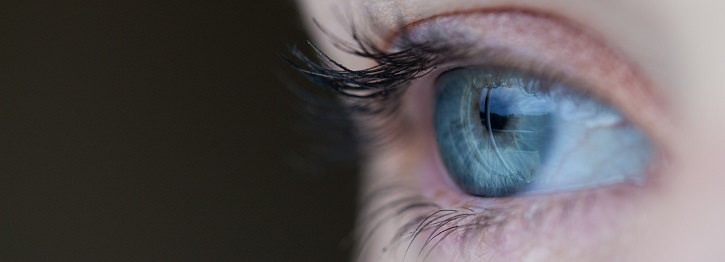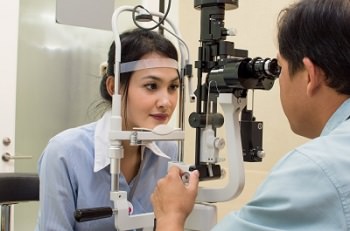
|
Your eyes are your windows to the world. It’s natural that as you age you might experiences some problems. Many of conditions sound scary however advancements in eye treatment have come a long way. Here is a list of the most common concerns explained simply. I’ve also gathered some tips on how to improve your eye health in your day-to-day life, which you can see by scrolling down to the end. |
|
 |
|
|
Presbyopia - The loss of the ability to see close objects or small print. This is a natural process that happens to everyone. It’s only noticeable after the age of 40. It’s fairly easy to correct with reading glasses. Most times you don’t need a prescription and they can be bought over the counter at a pharmacy. |
|
|
Floaters - These are the tiny spots that often float in your line of vision. They don’t usually cause any harm and are fairly normal. If they are accompanied by flashes this indicates a more serious problem and you should go to an ophthalmologist. |
|
|
|
|
|
Tearing -The opposite of dry eyes, you might experience an excess of tears. Often light sensitivity, wind, and temperature change affect the eyes. Sometimes tearing can be prevented by wearing sunglasses. It might also indicate a more serious condition like a blocked tear duct or an infection. In both cases, a doctor can help treat this problem. |
|
|
Eyelid problems - The eyelids job is to protect the eye, distribute tears and control the amount of light entering the eye. Sometimes they droop; have blinking spasms, develop styes or the outer edges near the eyelashes become inflamed. Eyelids might experience pain, itching, tearing and sensitivity to light. These problems can be treated with medication, proper cleaning or surgery. |
|
|
Cataracts - One of the most common eye problem associated with aging. Proteins in the eye can cluster and form a cloud over the lens. These formations cause no pain and usually do not alter vision. If they grow large or thick, they can block light from entering the eye and they can be removed by surgery. |
|
|
Glaucoma - A disease associated with increased eye pressure and can damage the optic nerve, and cause loss of vision. Glaucoma can be treated with prescription eye drops or surgery. Because there are no symptoms or any pain initially it is important to have your eyes regularly checked by an eye doctor, despite it being a less common eye condition. |
|
|
Corneal diseases - The cornea is the dome-shaped front of the eye, which helps transmit and focus light. The cornea can become damaged by disease, infection, injury and exposure to toxic agents. The eye will become red, watery, and experience pain. One might also have reduced vision and experience the halo effect in one’s vision. Corneal disease can be treated with medicated eye drops, prescription glasses or by surgery. |
|
|
Conjunctivitis (Pink Eye) - This is when the tissue lining the eyelids and covering the cornea becomes inflammed. The eye becomes red, itches, burns, tears and has discharge. Sometimes it feels as if something is in the eye. Conjunctivitis is caused by infection, exposure to chemicals or irritants, and allergies. It can be treated with medicated drops, warm compresses or lubricating drops to make the eye more comfortable. |
|
|
Retinal disorders - The retina is the layer of tissue at the back of the inner eye and changes visual images into to nerve signals, which are sent to the brain. Diseases of the retina disrupt the transfer and can cause vision impairment. It’s important to have your eyes tested regularly to catch any diagnosis early, receive treatment and prevent vision loss. |
|
|
|
| Eye Care Tips | |
|
1. Visit the eye doctor, even if you have good vision 
Part of good eye health is going to the eye doctor regularly. People who have healthy sight often neglect visiting the eye doctor. It’s important to regularly have your eyes inspected by an ophthalmologist so they can detect even slight changes in your eyes health. Your eyes’ health connects to other systematic health issues. |
|
| Source | |
|
2. Eat for good vision The old saying that carrots are good for eyesight has some truth to it. Choosing foods high in antioxidants and nutrients lowers the risk for eye diseases. Choose foods rich in lutein, omega 3 fatty acids, Vitamin C and E3. The recommended foods are leafy greens, cold water fish, nuts, beans, eggs, soy, and fruit with dark skin (i.e. berries, cherries, grapes). Citrus fruits, avocado, broccoli, and tea are also healthful choices. |
|
|
3. Protective eyewear Your eyes can easily be damaged by the sun and hazardous materials. Wearing sunglasses and protective goggles are a good start. If you wear glasses, you should get your lenses coated with an anti-reflective layer to minimize glare. UV rays also reflect off water, sand and snow so it’s important to not only wear sunglasses when in direct sunlight. Make sure your sunglasses protect against both UVA and UBV rays and are at least ranked as category 2. |
|
|
4. Take your contacts out Your eyes need exposure to oxygen. If you wear contacts during the day, make sure it is for no more than 19 hours. Wearing them longer can cause eye irritation and dryness. |
|
|
5. Good rules for computer (and other) screen time If you spend a lot of your day looking at a computer screen, employ the 20-20-20 rule. Rest your eyes every 20 minutes, looking 20 feet (6 meters) in front of you for 20 seconds. It’s also a good idea to make sure your eyes are level with the screen and that you are blinking often. People blink less when they are staring at a computer screen. |
|
|
Wearing mascara, eyeliner and eye shadow can clog up the pores around your eyes. This can cause eye irritation and styes. A good idea is to keep make-up wipes next to your bed so that you don’t forget to wipe off your makeup before bed. |
|
|
7. Control the air environment Many offices and homes have dry air and this can irritate the eye and cause dryness. Installing a humidifier can solve this problem. A more organic way to release moisture into the air is by placing bowls of water around a room. |